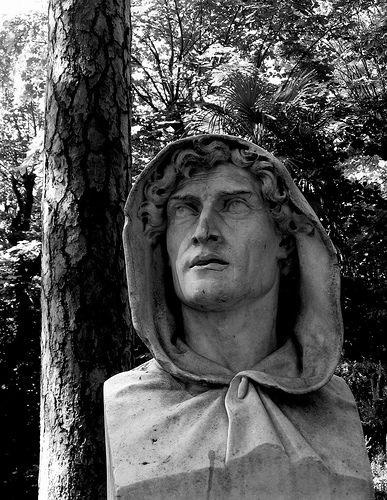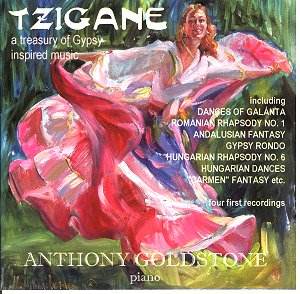 500 years after the oppressive yoke of the Church was lightened, the BFAG Group of countries (Britain, France, America and Germany) arrogate all credit to themselves. Truth be told, the story is something else altogether.
500 years after the oppressive yoke of the Church was lightened, the BFAG Group of countries (Britain, France, America and Germany) arrogate all credit to themselves. Truth be told, the story is something else altogether. Where does the story start?
Estranged relations between Rome and Constantinople, for many years, lead to the Schism of the 1054. Thereafter, the Roman Church lost all its Eastern mellowness and acquired dimensions of power, wealth, authority, persecution and bloodshed. 50 years later Rome started on its first of the many Crusades.
Arnaldo da Brescia
100 years after the Schism, Arnaldo da Brescia (in English, Arnold of Brescia), an Italian monk, and disciple of Pierre Abelard was the first to challenege the might of the Roman Church. After a few years of criticism of the ways of the Church (possibly from 1135), his first brush with Church authority came in 1139.
After the Second Lateran Council in 1139, he was forced into exile. He roamed from place to place - Zug (Switzerland), Paris, Zurich, Bavaria - and was finally allowed to return to Italy in 1143. On his return, he found a Rome in ferment. Romans found the yoke of Church very heavy and set up a Republican Commune, under the political leadership of Giordano Pierleoni, from a wealthy Jewish family.
The Republican Commune was short lived - and the Church soon regained its authority. For this, he was denounced as the “father of political heresies”. In what was to become a familiar routine, he was burned alive in 1156, and his ashes thrown into the Tiber.
The Roman Church, with the firm backing of the Roman Empire and subsequent rulers like Charlemagne, had become the most powerful authority in Europe. Arnaldo da Brescia’s opposition to Church involvement in European politics and the preoccupation of the Church in accumulation of wealth endeared him to no one.
Albiginsian Heresy (1209-1255)
“Novit enim Dominus qui sunt eius” instructed the Abbot of Citeaux to his followers. In English that means ” Kill them all, God will know his own.” And 200,000 people were killed.
Cathars of Langudoc were Christians from Southern France (South of Loire Valley). They spoke the language of Oc, hence Langudoc - whereas Northern France langued’oil spoke French. They believed that there was evil in this world and Satan was doing his best to tempt people. Thus, they lived ascetic lives and did not marry (remember, the Bible says that women (Eve) was the cause of Original Sin and reason for downfall of Man (Adam) from the Garden of Eden). ‘Cathar’ is derived from the Greek work Katharos (Pure). Cathar leaders were the Parfaits (Pure Souls) and Cathar believers, called croyants, could have families.
Modern day Roma Gypsies made their first mark in Europe in Provence. The richness of the Roma Gypsy music (originally, from India) overwhelmed the people of Southern France. They whole heartedly, assimilated the Gypsies (then famous as troubadours) and their culture - warmly. Centuries later, Verdi wrote the Il Trovatore, in 1853, a story about the clash between the White Christian Spain and a band of Gypsies. Georges Bizet’s, Carmen, another opera about the love of a Spaniard and the Gypsy, Carmen, used Gypsy music and themes considerably - apart from the story itself. In 1859, Franz Liszt wrote, The Gypsies And Their Music In Hungary, a 450-odd page treatise on Gypsy music - and his Hungarian Rhapsody was based on Gypsy music.
In the bleakness of Europe, the French poet Voltaire, the English WB Yeats, lamented and longed for Provence and the richness of the Provencal culture, 500 years later. Modern French cuisine, wine culture and tradition took root in this very area - and survived in spite of the best attempts by the Church to exterminate it.
How Many People Were Killed?
The xenophobic Church, allied with Northern France and wrote one of the bloodiest chapters in blood and loot. Over the next 41 years, a mercenary group, varying between 10,000-50,000, was raised. They were tempted with an Papal offer that they could take whatever they could lay their hands on. ‘Finders keepers’ was the rule that Roman Church established. The marauders wasted the entire population of Provence. Its culture wiped out. The Cathars were burnt at the stake, tortured, and killed in many different ways. More than 200,00o people were killed.
Peter Valdes and The Poor Men Of Lyons
Peter Valdes (Peter Waldo in English), a rich merchant from Lyons, France, was inspired by a troubadour tale (Roma Gypsies again) of the death of holy man. 1173, circa, he gave away a part of his wealth to his wife. From the rest of his wealth, he compensated those he had dealt with unfairly in trade. He spent a part of his wealth on scholars to translate the Bible to common French. Initially, Pope Alexander III gave The Waldensians permission to preach - subject to local priestly permissions. With time, his group grew and are today referred to as the Waldensians and the “The Poor Men Of Lyons”. As the followers of the Valdes increased, permissions dried up. The Waldensians were labeled as schismatics. In 1184, Pope Lucius III excommunicated the “Poor Men of Lyons”. Persecution followed.
After one incident, eighty Waldensians were burnt alive. The rest escaped to Bohemia-Moravia (modern Czechoslovakia). Many Waldensians escaped to northern Italy to avoid persecution in France. In yet another incident, the “Piedmont Easter”, French forces massacred 1,700 Waldensian men, women, and children.
Valdes used his new found knowledge of the Bible to counter the Roman Catholic Church. His followers rejected many aspects of Roman Catholicism - like the priesthood, indulgences, purgatory, and praying to saints. Later, Waldensians, became followers of Bohemian reformer Jan Hus (who was burned at the stake in 1415). In 1532, the Waldensians, under the guidance of William Farel, an associate of John Calvin, integrated with the Protestant faith.
Hussite Revolt - 1419-36
 After the Albigensian crusades, the Church did not face any serious opposition. Britain, France, Germany quietly fell in line. But in the early 15th century, a courageous, new intellectual leader challenged Rome. And it started in Bohemia.
After the Albigensian crusades, the Church did not face any serious opposition. Britain, France, Germany quietly fell in line. But in the early 15th century, a courageous, new intellectual leader challenged Rome. And it started in Bohemia.
Bohemia, a small kingdom, (now a part of Czechoslavakia) discovered major silver deposits. The King Of Bohemia, Charles-I, invited Germans from nearby areas to expand trade and commerce. In 1419 King Wenceslas of Bohemia died. Emperor Sigismund, of Germany, a staunch Catholic of the Holy Roman Empire, inherited the Kingdom.
The first major successful revolt against the Church were the Hussite wars - a 100 years before the Martin Luther’s Ninety Five Theses (in 1517). Led by Jan Zizka. A small Czech Army repeatedly defeated the Catholic Army from Germany. After 20 years of defeats, the Church was forced to negotiate. The trigger for this war was a University rector.
The Rector Of Prague
At the Charles University of Prague. The rector went by the name of Jan Hus. A supporter of Church Reform, he opposed many practices of the Roman Church. Hus was persuaded to attend the Council Of Konstanz (Constance) under the protection of the Emperor Sigismund. The Emperor refused to honour his promise of safe conduct and allowed Hus to be tried and then executed as a heretic. In 1415 John Hus was arrested and condemned to death by the members of the Council of Konstanz (Constance).
Bohemia was in uproar. Supporters of Hus made their displeasure plain. The protestors organised themselves , took the Chalice (Calyx) as their symbol and came to be known as Calyxtines. More than 500,000 died in the following unrest.
Jan Zizka
In 1420, a 60 year old man, blind in one eye took charge - and took on the might of the Roman Church and Roman Emperors.
Jan Zizka.
Over the next 12 months, he became completely blind. In the next 15 years, Zizka (and other Czech generals) defeated, many times, the combined armies of Germany, The Roman Church and others. His military strategy was studied for the next 500 years. Thereafter, the myth of military might of the Church was broken forever.
Jan Zizka allied himself with the Taborites (the radical Hussite wing). Zizka made Tábor in Bohemia into an armored and mobile fortress - the Wagenburgs. Sigismund tasted defeat at Visehrad (now a part of Prague) at the hands of Zizka (July, 1420) and the Taborite troops. Many anti-Hussite crusades were launched unsuccessfully against Zizka. One Catholic stronghold after another, fell. Zizka continued to command in person, though he had become totally blind in 1421.
In 1423 Zizka formed his own Hussite wing, while remaining in close alliance with the Taborites. In 1424, Zizka used his army, to lower tensions between the radical Taborites and the moderate Utraquists, whose stronghold was at Prague. He sent his armies to Prague to force the city to adhere to the anti-Rome /German policy. A negotiated armistice averted a civil war between the two Hussite factions. The outcome - a united attack on Moravia. The commander - Jan Zizka. On his death bed, Zizka, asked that his skin be used to make a drum that would lead his armies into battle.
Zizka ranks with the great military innovators of all time. Zizka’s army was made up of untrained peasants and burghers (townspeople). He did not have the time or resources to train these fighters in armament and tactics of the time. Instead they used weapons like iron-tipped pikes and flails, armored farm wagons, mounted with small, howitzer type cannons. His armored wagons, in offensive movements, broke through the enemy lines, firing as they rolled, cutting superior forces into pieces. For defense, the wagons were arranged into a tight, impregnable barrier surrounding the foot soldiers - the Wagenburg (the wagon fort), as they came to be known. The wagons also served to transport his men. Zizka thus fully initiated modern tank warfare. Zizka’s experience under various commanders was useful. At the battle of Tannenberg (1410), Zizka fought on the Polish side , in which the famed German Teutonic Knights were defeated.
End Of The Inquisition
After the use of The Inquisition, at trial of Joan Of Arc (1431), Inquisitions became less credible and infrequent. The last Inquisition was the conviction of Savanorola. Jerome Savonarola - 1452-1498, lived in Florence, Italy. An outspoken critic of Papal authority and the immoral lifestyle of the clergy, he soon made enemies. The Roman Church offered him the position of a cardinal, which he refused. Finally, he was excommunicated, arrested and burnt to death.
Mythology as History
Jan Hus initiated Church Reform and Jan Zizka broke the back of Papal authority. On the back of these Czech successes, was laid the foundation of 95 Theses by Martin Luther in 1517. The British break (1533-34) with the Holy Roman Church happened due to favors by the Papal office to the Iberian Empires - in matters of trade and colonial expansion, and the impediments to divorce of Henry-VIII at the behest of the Spanish rulers.
Today, the Germans and the British are loath to be reminded about the Czech Church Reform initiatives and the defeats at the hands of the Poles and Czechs. Western historiography about the Enlightenment and Renaissance, in Britain, France and Germany, leading to the reformation is ‘mythology as history’.
No comments:
Post a Comment